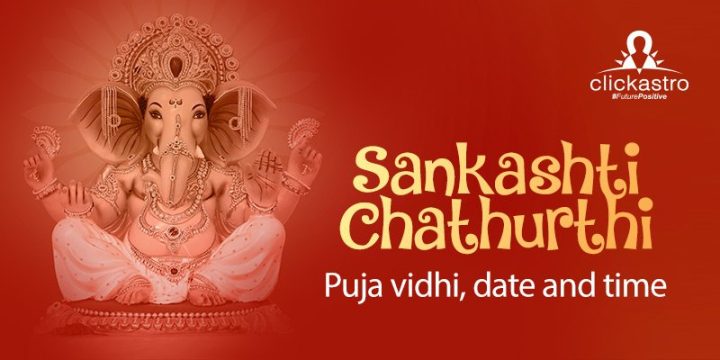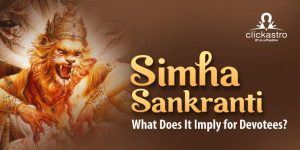Contents[hide]
The Might of Lord Ganesha
One of the most recognisable deities in the world is Lord Ganesha. If you want your journey to be smooth and stress-free, pray to Him. Devotees believe Lord Ganesha accomplishes this by bestowing wisdom on his devotees and acting as the energy that propels them forward in their fight against challenges. Lord Ganesha, as an embodiment of virtue, is also known to bestow health, happiness, and wealth on his devotees. Wishes are granted by Lord Ganesha on the day of Sankashti Chaturthi. Devotees all over the world fast and perform rituals to invoke his favour. Lord Ganesha is also popular among female devotees. They see in him a force in which they have faith, and they hope that he will protect their families from the harsh realities of life.Sankashti Chaturthi every month
Sankashti Chaturthi, which is observed every lunar month, places a strong emphasis on the sighting of Moon and offering Arghya to the Moon. Every month on this day, Lord Ganesha is worshipped with different peetas (Lotus petals) and names. There are a total of 13 vrat or fasts, each with its own story and purpose. The first twelve Vrats are for the twelve months of the year, and the final one is for ‘adhika maas’ or the extra month that occurs every four years in a Hindu calendar. Every vrat and every story is unique to the specific month and recited only during that period. This day is considered to be highly auspicious since it is the day Lord Shiva declared that his son Lord Ganesha was to be the most superior among all gods, apart from Parvati, Lakshmi, and Vishnu. It was from this point that Lord Ganesha or Sankashti began being worshipped as the lord of prosperity, good fortune, and freedom. Sankashti Chaturthi’s significance and Sankashti Chaturthi ki Kahani has been mentioned in many ancient manuscripts, notably the Bhavishya Purana and Narasimha Purana, while it was also explained by Lord Krishna to Yudhishthira in the Mahabharata.Sankashti Chaturthi Vrat and Puja Rituals
The Sankat Chaturthi vrat Vidhi is performed in the evening. An important ritual in this is the sighting of the Moon in the evening. Durva grass and flowers are used to decorate an idol of Lord Ganesha. While doing so, appropriate Vedic mantras are recited. Following that, the devotees read and follow the spiritual context of the vrat katha for that month. The fast is then broken after worshipping Lord Ganesha and viewing the moon. Devotees eat foods that are traditionally thought to be Lord Ganesha’s favourites. Modaks and other sweets are among them. Because Sankashti Chaturthi is also a Moon festival, it entails sprinkling water, sandalwood paste, and consecrated rice in the direction of the Moon. It is also beneficial to recite the mantra:Vakra-Tunndda Maha-Kaaya Suurya-Kotti Samaprabha I Nirvighnam Kuru Me Deva Sarva-Kaaryessu Sarvadaa IIIn addition, devotees also chant the Ganesha Ashtotram and Sankashtnashana stothra.
Sankashti Chaturthi fasting procedure
Sankashti Chaturthi fasting procedure is observed for the well-being of the entire family. The fast is usually observed from the morning and broken in the evening once prayers to Lord Ganesh are finished, and various offerings are made to the Moon. It is advised that individuals keeping the fast refrain from regular food. Instead, there is a list of items that can be consumed during this time. Sabudana khichdi, fruits, peanuts, potatoes, and unsalted chips are all permitted.Sankashti Chaturthi Dates and Timings for 2024
| January 29, 2024, Monday | Sakat Chauth, Lambodara Sankashti Chaturthi | Chaturthi Tithi Timings: From 06:11 AM Jan 29 to 8:54 AM on Jan 30 |
| February 28, 2024, Wednesday | Dwijapriya Sankashti Chaturthi | Chaturthi Tithi Timings: From 01:53 AM Feb 28 to 04:18 AM Feb 29 |
| March 29, 2024, Friday | Bhalachandra Sankashti Chaturthi | Chaturthi Tithi Timings: From 06:57 PM Mar 28 to 08:21 PM Mar 29 |
| April 27, 2024, Saturday | Vikata Sankashti Chaturthi | Chaturthi Tithi Timings: From 08:18 AM Apr 27 to 08:22 AM Apr 28 |
| May 27, 2024, aMonday | Ekadanta Sankashti Chaturthi | Chaturthi Tithi Timings: From 06:06 PM May 26 to 04:53 PM May 27 |
| June 25, 2024, Tuesday | Krishnapingala Sankashti Chaturthi | Chaturthi Tithi Timings: From 01:23 AM Jun 25 to 11:11 PM Jun 25 |
| July 24, 2024, Wednesday | Gajanana Sankashti Chaturthi | Chaturthi Tithi Timings: From 07:30 AM Jul 24 to 04:39 AM Jul 25 |
| August 23, 2024, Friday | Bahula Chaturthi, Heramba Sankashti Chaturthi | Chaturthi Tithi Timings: From 01:46 PM Aug 22 to 10:39 AM Aug 23 |
| September 21, 2024, Saturday | Vighnaraja Sankashti Chaturthi | Chaturthi Tithi Timings: From 09:15 PM Sep 20 to 06:14 PM Sep 21 |
| October 20, 2024, Sunday | Karwa Chauth, Vakratunda Sankashti Chaturthi | Chaturthi Tithi Timings: From 06:46 AM Oct 20 To 04:17 AM Oct 21 |
| November 19, 2024, Tuesday | Ganadhipa Sankashti Chaturthi | Chaturthi Tithi Timings: From 06:56 PM Nov 18 to 05:28 PM Nov 19 |
| December 18, 2024, Wednesday | Akhuratha Sankashti Chaturthi | Chaturthi Tithi Timings: From 10:16 AM Dec 18 to 10:03 PM Dec 19 |








Hlo I m Deepika sethi my DOB is 23-10-1999 I m manglik and i have a partner since last six years his name is Jitender Singh Ahlawat non manglik he is jatt and m punjabi I wanna know ki humri marriage hogi or hogi to preferable hogi? Plz replyy
खिचड़ी कब बनेगी…?
१४ को या १५ को…?
As per on age ,on which age which ear piercing is should be done n its benefits can I get full detail information
Good article
Thank you
My marriage love or arrange???
I hVe tqo questions to clarify please . Firstly is it okay to have tea in morning when fasting and secondly if the weather is cloudy there is a less chance of seeing the moon to break fast. What can be done in such a situation. Please advise.